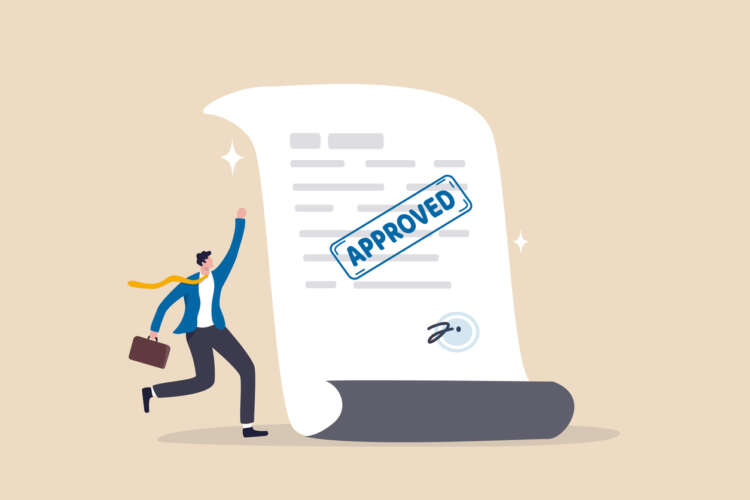Banking
Business Loans: Types of Loans and How to Apply

Business Loans: Types of Loans and How to Apply
Business loans
Business loans are financial resources provided by lenders to businesses to help them grow, expand, and meet their financial needs. The importance of business loans lies in their ability to provide businesses with the necessary capital to invest in their operations, purchase inventory or equipment, expand their workforce, and take advantage of new business opportunities. Business loans also offer a way for businesses to manage their cash flow and cover short-term expenses, such as payroll, rent, and utilities.
By providing businesses with access to capital, business loans can help fuel economic growth and job creation. They can also help businesses improve their credit scores by making timely payments and demonstrating financial responsibility. Ultimately, business loans are a crucial component of the economy, providing businesses of all sizes and industries with the necessary financial resources to succeed and thrive.
Types of Business Loans
- Term Loans:
Definition and features: Term loans are a type of business loan that provides a lump sum of capital to a borrower, which is then repaid over a set period of time with interest. These loans typically have fixed interest rates and monthly payments, making them a predictable and stable source of funding. The term of the loan can vary depending on the lender and the borrower’s needs, ranging from a few months to several years.
Long-term and short-term term loans:
Term loans can be categorized as either long-term or short-term. Long-term term loans typically have a repayment term of several years and are used for larger investments such as equipment purchases, real estate, and other capital expenditures. Short-term term loans have a shorter repayment term, usually less than a year, and are used to cover short-term cash flow needs, such as inventory purchases or seasonal expenses.
Pros and cons of term loans:
The pros of term loans include predictable payments, lower interest rates compared to other types of loans, and the ability to build credit by making timely payments. The cons include the need for collateral or a personal guarantee, longer approval times, and the possibility of prepayment penalties.
Examples:
Examples of term loans include traditional bank loans, online loans, and loans from the Small Business Administration (SBA). Some well-known lenders that offer term loans include LendingClub, Funding Circle, and Kabbage.
- Lines of Credit:
Definition of Lines of Credit:
A business line of credit is a type of loan that provides a borrower with a revolving line of credit that can be drawn upon as needed. The borrower can withdraw funds up to a predetermined credit limit and only pays interest on the funds that are borrowed. Once the funds are repaid, the credit line is available to be used again.
How Lines of Credit works:
A business line of credit works similar to a credit card, where the borrower has a maximum credit limit and can use the funds as needed. Interest is only charged on the amount of money that is borrowed, and once the borrower repays the borrowed funds, the credit line becomes available again. Unlike a term loan, the borrower only pays interest on the amount borrowed and not the entire credit limit.
Pros and cons of Lines of Credit:
The pros of a business line of credit include flexibility and convenience, as the borrower can access funds as needed and only pay interest on the borrowed amount. It can also be a useful tool for managing cash flow fluctuations. The cons include higher interest rates compared to term loans and the possibility of a higher risk of overspending and accumulating debt.
Examples:
Examples of lenders that offer business lines of credit include traditional banks, online lenders, and alternative lenders such as Kabbage and OnDeck. Some lenders also offer secured lines of credit, where the borrower provides collateral to secure the line of credit.
- Equipment Loans:
Definition of Equipment Loans:
An equipment loan is a type of loan that is used to purchase new or used equipment for a business. These loans are typically secured by the equipment itself, meaning that if the borrower defaults on the loan, the lender can repossess the equipment. Equipment loans can have fixed or variable interest rates and repayment terms that range from a few months to several years.
How Equipment Loans works:
When a borrower applies for an equipment loan, they will typically need to provide details about the equipment they are purchasing, such as the make, model, and purchase price. The lender will then use this information to determine the loan amount, interest rate, and repayment term. Once approved, the borrower will use the loan funds to purchase the equipment, and the lender will take a security interest in the equipment until the loan is fully repaid.
Pros and cons of Equipment Loans:
The pros of equipment loans include the ability to purchase equipment without tying up cash reserves or other credit lines, and the fact that the equipment itself serves as collateral for the loan. Equipment loans can also have lower interest rates compared to other types of loans, as the equipment serves as a tangible asset that can be repossessed if the borrower defaults. The cons include the need for a down payment or collateral, and the fact that the equipment may become outdated or obsolete before the loan is fully repaid.
Examples:
Examples of lenders that offer equipment loans include traditional banks, online lenders, and specialized equipment financing companies such as Crest Capital and Balboa Capital. Some lenders may also offer equipment leases, where the borrower rents the equipment for a set period of time with the option to purchase the equipment at the end of the lease term.
- SBA Loans:
Definition of SBA Loans:
SBA loans are a type of loan that are partially guaranteed by the U.S. Small Business Administration (SBA). These loans are designed to provide small businesses with access to affordable financing options, and the SBA guarantee helps to mitigate the risk for lenders, making it easier for small businesses to secure funding. SBA loans can be used for a variety of business purposes, including working capital, equipment purchases, and real estate.
Types of SBA loans:
There are several types of SBA loans, including:
- SBA 7(a) loans: These are the most common type of SBA loan and can be used for a variety of business purposes, including working capital, equipment purchases, and real estate.
- SBA 504 loans: These loans are specifically designed for real estate and equipment purchases and can be used to finance up to 90% of the total project cost.
- SBA microloans: These loans are smaller loans (up to $50,000) that are designed for small businesses that need a smaller amount of funding.
Pros and cons of SBA Loans:
The pros of SBA loans include lower interest rates and longer repayment terms compared to other types of loans, making them a more affordable option for small businesses. The SBA guarantee also helps to mitigate the risk for lenders, making it easier for small businesses to secure funding. The cons include a lengthy application process and strict eligibility requirements.
Examples:
Examples of lenders that offer SBA loans include traditional banks and credit unions, as well as online lenders such as SmartBiz and Fundera. The SBA itself does not provide loans directly but works with approved lenders to provide financing to small businesses.
- Invoice Financing:
Definition of Invoice Financing:
Invoice financing, also known as accounts receivable financing, is a type of financing that allows businesses to receive cash advances on their outstanding invoices. The lender will typically advance a percentage (typically 70-90%) of the value of the outstanding invoices and will collect payments directly from the business’s customers. Once the invoices are paid in full, the lender will return the remaining balance to the business, minus any fees or interest charges.
How Invoice Financing works:
When a business applies for invoice financing, the lender will typically review the business’s outstanding invoices and creditworthiness. Once approved, the lender will advance a percentage of the value of the outstanding invoices, typically within a few days. The business’s customers will then be notified to make payments directly to the lender, rather than to the business. Once the invoices are paid in full, the lender will return the remaining balance to the business, minus any fees or interest charges.
Pros and cons of Invoice Financing:
The pros of invoice financing include the ability to receive cash advances quickly and without the need for collateral, as the invoices themselves serve as collateral for the loan. Invoice financing can also help businesses to manage cash flow and reduce the risk of late payments or bad debt. The cons include higher fees and interest rates compared to other types of financing, as well as the possibility of damaging relationships with customers if the lender’s collection practices are not handled professionally.
Examples:
Examples of lenders that offer invoice financing include traditional banks, online lenders, and specialized factoring companies such as BlueVine and Fundbox. Some lenders may also offer recourse or non-recourse financing, where the lender assumes the risk of non-payment by the business’s customers.
How to Apply for a Business Loan:
- Determine your business needs:
Assess your financial situation:
Before applying for a business loan, it’s important to assess your financial situation. This includes evaluating your credit score, debt-to-income ratio, and cash flow. Lenders will use this information to determine your creditworthiness and the terms of the loan.
Identify your business goals:
It’s also important to identify your business goals and how the loan will help you achieve them. This includes determining how much funding you need, what the funds will be used for, and how the loan fits into your overall business strategy.
Examples:
For example, if your business needs to purchase new equipment to increase production, you may need to apply for an equipment loan. Alternatively, if you need working capital to cover expenses during a slow season, you may consider a line of credit or invoice financing. By identifying your business goals and needs, you can determine which type of loan is the best fit for your situation.
- Research different lenders and loan options:
When it comes to applying for a business loan, there are several types of lenders to consider:
Banks:
Traditional banks are often the first choice for business owners seeking a loan. They typically offer a range of loan products, including term loans, lines of credit, and SBA loans. However, bank loans can be difficult to qualify for, especially for businesses with less established credit or those with riskier business models.
Credit unions:
Credit unions are member-owned financial cooperatives that offer many of the same products and services as traditional banks, including business loans. Credit unions are often more community-focused than banks, and may be more willing to work with businesses that have less established credit.
Online lenders:
Online lenders have become increasingly popular in recent years due to their ease of use and quick approval times. Online lenders typically offer a range of loan products, including term loans, lines of credit, and invoice financing. However, online lenders often charge higher interest rates and fees than traditional banks.
Government programs:
The Small Business Administration (SBA) offers a range of loan programs designed to help small businesses access funding. These include the popular 7(a) loan program, which provides up to $5 million in funding for a variety of business purposes, and the 504 loan program, which is designed to help businesses purchase commercial real estate.
Alternative lenders:
Alternative lenders, such as peer-to-peer lending platforms and crowdfunding sites, offer a range of loan products for businesses. These lenders often have less stringent eligibility requirements than traditional banks, but may charge higher interest rates and fees.
Examples:
Examples of lenders in each category include Wells Fargo and Bank of America for banks, Navy Federal Credit Union and Patelco Credit Union for credit unions, OnDeck and Kabbage for online lenders, and Kickstarter and Indiegogo for crowdfunding sites.
- Prepare your loan application:
Once you have identified the lender and loan option that best fits your business needs, it’s time to prepare your loan application. This typically involves the following steps:
Gather required documents:
Lenders will typically require a variety of documents to evaluate your loan application. This may include financial statements, tax returns, bank statements, and business plans. Make sure you have all of the required documents on hand before you begin your application.
Complete the application form:
Most lenders will require you to complete an application form that asks for information about your business, such as your industry, revenue, and ownership structure. Be sure to provide accurate and complete information, as any errors or omissions could delay the loan approval process.
Provide supporting documents:
In addition to the application form, you will also need to provide supporting documents to demonstrate your creditworthiness and ability to repay the loan. This may include personal and business credit reports, proof of collateral, and letters of recommendation. Be sure to carefully review the lender’s requirements and provide all of the requested information.
Examples:
For example, if you are applying for an SBA loan, you may be required to provide a detailed business plan, financial projections, and proof of collateral. If you are applying for an equipment loan, you may need to provide documentation about the equipment you plan to purchase and its expected return on investment. By carefully preparing your loan application and providing all of the required documentation, you can improve your chances of securing the funding your business needs.
- Submit your loan application:
Once you have prepared your loan application, it’s time to submit it to the lender. This typically involves the following steps:
Review your application before submitting:
Before you submit your loan application, be sure to carefully review all of the information you have provided. Check for accuracy and completeness, and make any necessary corrections or additions. You may also want to have someone else review your application to catch any errors or oversights you may have missed.
Submit your application:
Once you are confident that your application is complete and accurate, you can submit it to the lender. This may involve submitting your application online, by mail, or in person at a branch location.
Follow up with the lender:
After you have submitted your application, be sure to follow up with the lender to ensure that it is being processed in a timely manner. You may want to check in periodically to get updates on the status of your application and to provide any additional information or documentation that may be requested.
Examples:
For example, if you have applied for an SBA loan, you may need to follow up with the lender to provide additional documentation or to answer any questions they may have about your business plan or financial projections. If you have applied for an equipment loan, you may need to follow up with the lender to provide proof of insurance or to schedule an inspection of the equipment. By staying in touch with the lender and providing any requested information or documentation, you can help ensure that your loan application is processed as quickly and efficiently as possible.
In conclusion, there are several types of business loans available to meet the varying needs of different businesses, including term loans, lines of credit, equipment loans, SBA loans, and invoice financing. When applying for a business loan, it is important to determine your business needs, research different lenders and loan options, prepare your loan application, and follow up with the lender.
Choosing the right loan for your business needs is crucial, as it can impact your ability to achieve your business goals, manage cash flow, and build a solid credit history. It is important to carefully consider the terms and conditions of each loan option, including interest rates, repayment terms, fees, and collateral requirements, before making a decision. By taking the time to understand your options and choosing the loan that best meets your needs, you can position your business for long-term success.

-
Business4 days ago
Developing a Response to a PR Crisis
-
Top Stories3 days ago
Insurers flee climate alliance after ESG backlash in the U.S
-
Business3 days ago
This is Milk hires fresh talent with 15 new jobs as growth continues
-
Top Stories3 days ago
Engie, Amazon inaugurate Italy’s biggest agrivoltaic farm










